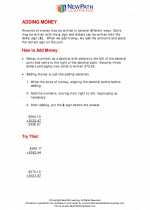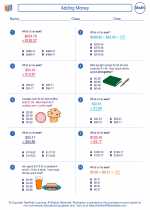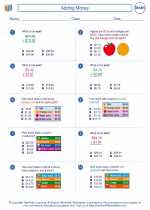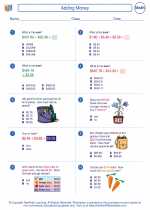Circle
A circle is a two-dimensional shape that is perfectly round and is defined as the set of all points in a plane that are a fixed distance, called the radius, from a given point, called the center. The distance across the circle passing through the center is called the diameter.
Key Concepts:
- Radius: The distance from the center of the circle to any point on the circle.
- Diameter: The distance across the circle passing through the center, which is twice the length of the radius.
- Circumference: The perimeter of the circle, which is equal to the distance around the circle and is found using the formula:
C = 2πrorC = πd, whereπ (pi)is a constant approximately equal to 3.14159. - Area: The amount of space inside the circle, which is found using the formula:
A = πr2, whereris the radius of the circle.
Properties:
- A circle has an infinite number of lines of symmetry, all passing through its center.
- The radius of a circle is always perpendicular to the tangent at the point of contact on the circle.
- The area of a circle is maximized for a given perimeter, making it the most efficient shape for enclosing a given area.
Examples:
Here are a few examples of real-life objects that can be represented by circles: coins, wheels, plates, and the face of a clock.
Understanding the properties and formulas associated with circles can help in solving various mathematical problems and real-world applications.
[Circle] Related Worksheets and Study Guides:
.◂Math Worksheets and Study Guides Third Grade. Adding Money
Study Guide Adding Money
Adding Money  Worksheet/Answer key
Worksheet/Answer key Adding Money
Adding Money  Worksheet/Answer key
Worksheet/Answer key Adding Money
Adding Money  Worksheet/Answer key
Worksheet/Answer key Adding Money
Adding Money  Worksheet/Answer key
Worksheet/Answer key Adding Money
Adding Money 

 Worksheet/Answer key
Worksheet/Answer key
 Worksheet/Answer key
Worksheet/Answer key
 Worksheet/Answer key
Worksheet/Answer key
 Worksheet/Answer key
Worksheet/Answer key

Create And Print more Adding Money worksheets with Adding Money Worksheets generator
The resources above cover the following skills:
Algebra (NCTM)
Use mathematical models to represent and understand quantitative relationships.
Model problem situations with objects and use representations such as graphs, tables, and equations to draw conclusions.